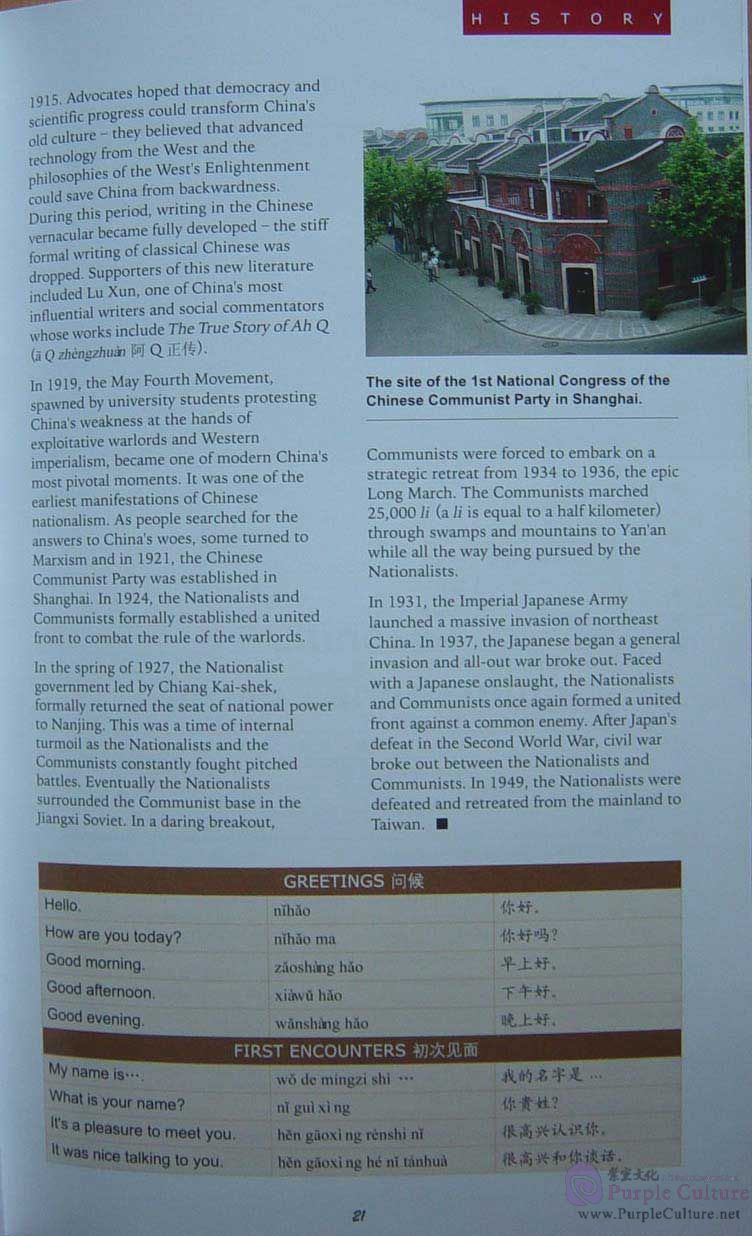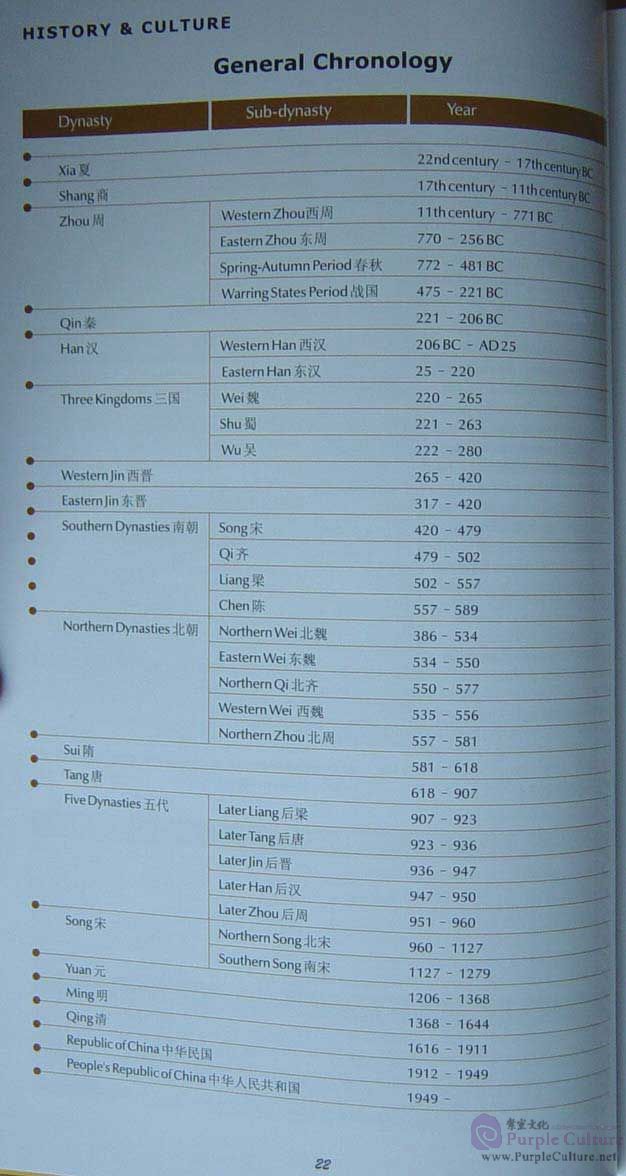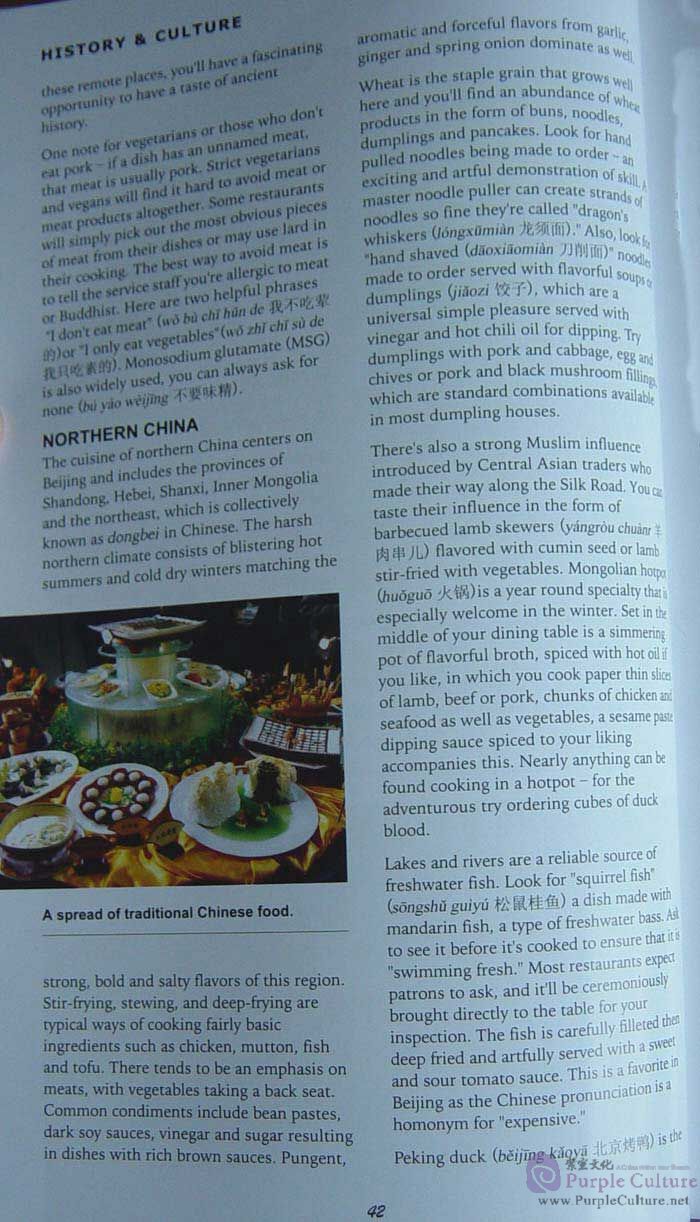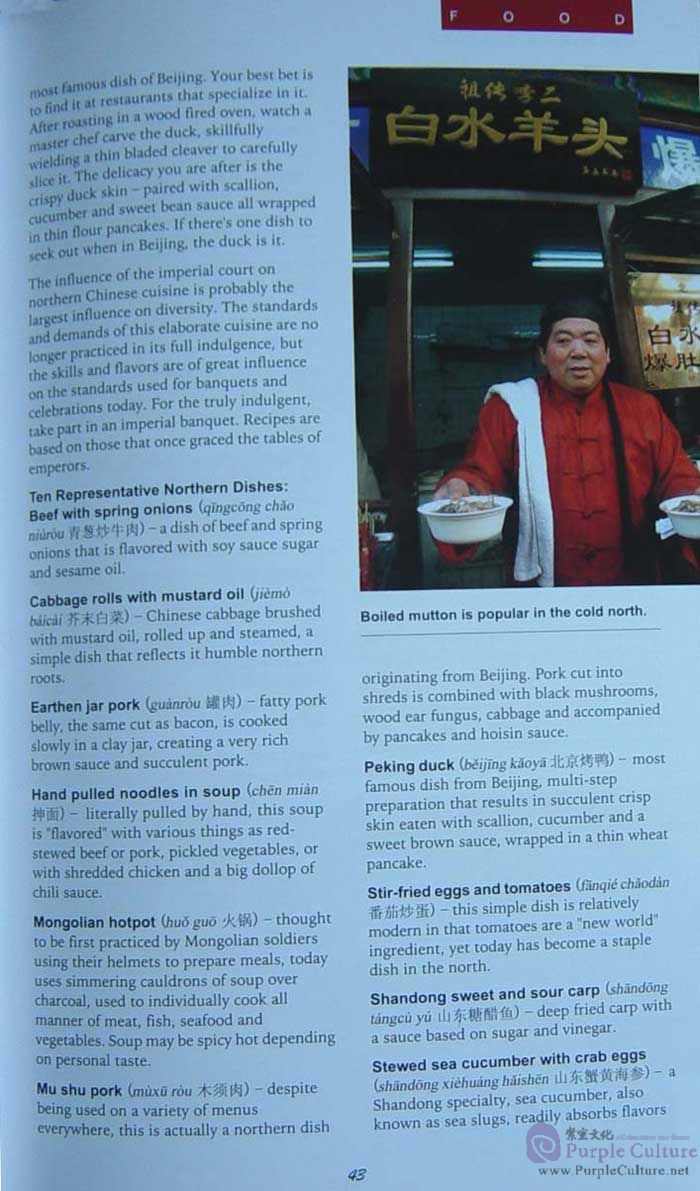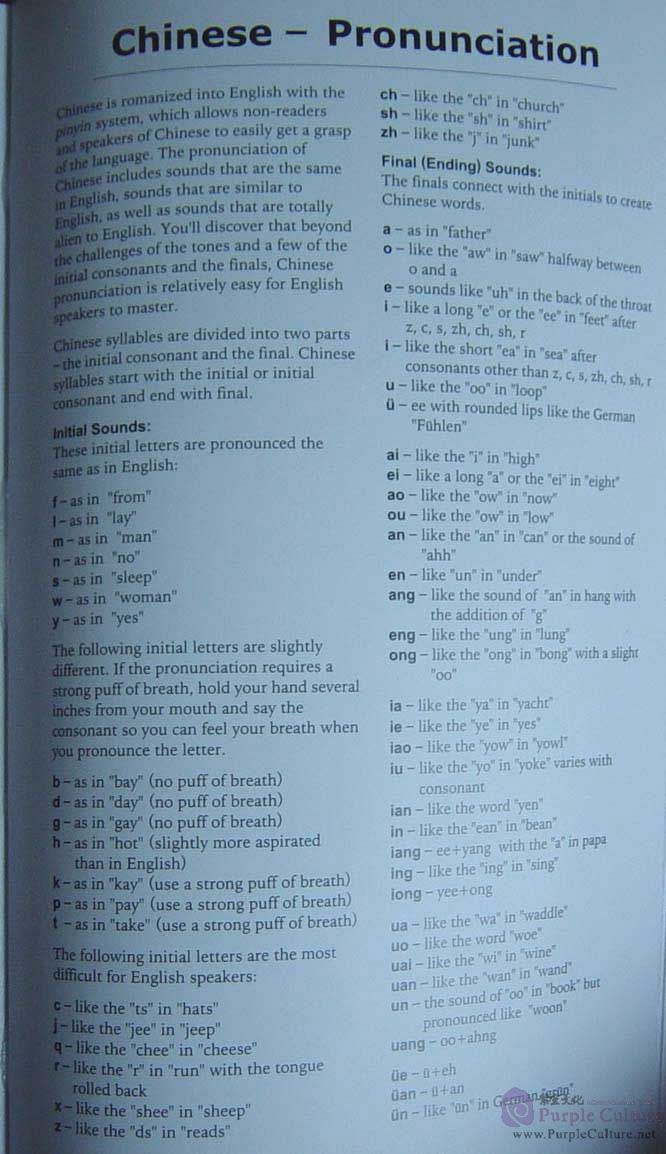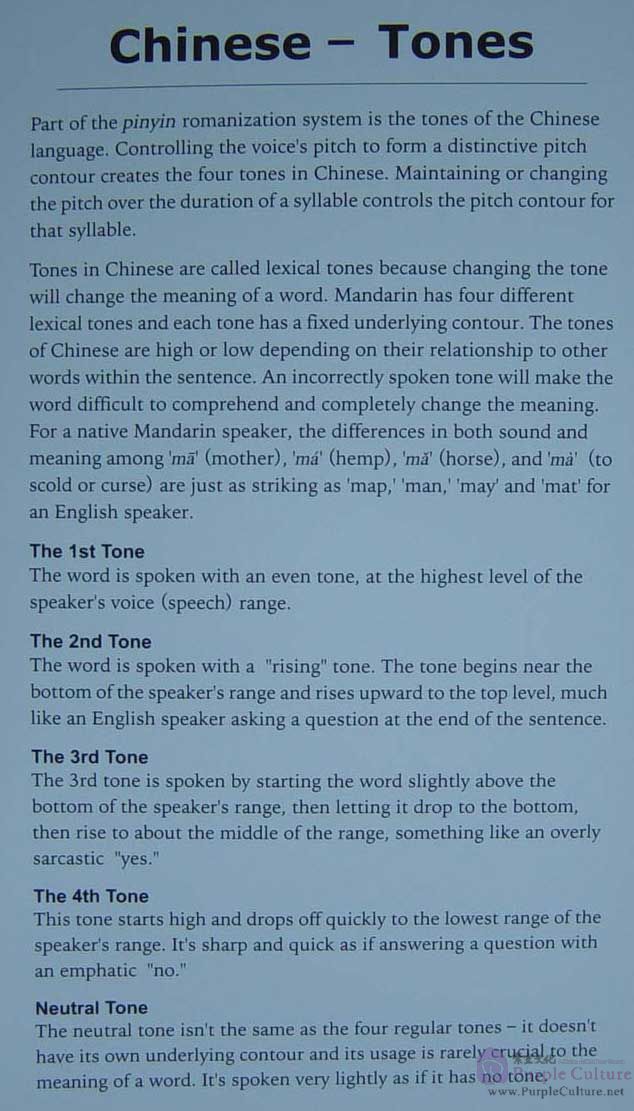Intercontinental’s Best of China introduces some of China’s most beautiful sights in an easy to understand format. Our guide has two parts: the first section introduces China’s history and culture, and the second section consists of 53 articles grouped into seven geographic areas, northeast China, north China, northwest China, east China, central China, southwest China, south China – and the cities of Beijing, Hong Kong, Macau and Taipei.
The articles consist of a destination guide followed by a practical information section. In the destination guide you’ll find up-to-date destination information with cultural and historic overviews. Important sights are in bold allowing quick and easy reference. Chinese characters and pinyin are also included – if you need help finding a sight, just show the Chinese characters to a local and they’ll help you on your way. Underneath the article title is the names of local UNESCO World Heritage Sites and to the right of the title is the local area code.
The “Making Your Trip Easy” section gives all the practical information you’ll need to make your trip a success. Inside this section are useful travel tips, transportation information, hotel and restaurant listings, and food and souvenir information describing local specialties and goods. Next to some restaurant and hotel names is a number that can be found on the city map allowing for quick reference. Our “Best Of” list includes some of the more spectacular sights that shouldn’t be missed. At the end of the information section we’ve included the phone numbers of information and complaint hotlines, and hospital and postal information. The information we’ve gathered represents the most up-to-date and accurate information available.
A note on terms: we’ve decided to keep some Chinese terms in our articles for convenience when communicating with the locals. Lu, Jie, Dao, Da Jie, Da Dao all mean road and some roads include direction references, bei is north, dong is east, nan is south and xi is west. Shan means mountain, for example Tai Shan means Tai Mountain.
Foreword
I’ll never forget my mother’s visit to Beijing two years ago. At age 72, she was coming to China for the first time in her life. Soon after entering my downtown apartment, this meticulous woman began to unpack her carefully organized suitcase. Wedged in with her clothes and shoes she had a few items that surprised me: a dozed rolls of toilet paper and a box of laundry detergent.
I couldn’t figure out why she would have deemed such items necessary for a trip that would only last two weeks. Then it struck me: except for letters I had sent and conversations we had had about my life in China, her principal source of information about the country was outdated and overly cautious guidebooks written for the most part by short-term visitors.
These books comprised the first generation of China guides. Their authors were pioneering travelers who made their trips in the late 70s, 80s and early 90s when China had just opened to the world after several decades of isolation. Tourists who ventured to China during those years truly did need to worry about finding basic necessities.
At the time, few tourists had seen China – and for that matter, China had seen very few tourists. Because of this, the task of writing guidebooks in those days – guides to lands uncharted in the modern era – fell only to those authors who looked upon hardship as a badge of honor, who sought the glory of being labeled ‘pioneers’, no matter how many 24-hour hard-seat train rides they’d have to endure in the process. It was all part of the price one paid to go down in modern history as one of the first to set foot in the new China, a country that, to the outside world, had been shrouded in mystery for more that a generation.
A funny thing happened after these books were published: travelers following the routes these popular titles recommended soon created sub-cultures and worlds of their own within China; worlds of foreign: Europeans and Americans running into Australians and Israelis while dining on banana pancakes in restaurants showing Hollywood films on big-screen TVs and playing Eminem on the stereo.
Through these first-generation books are updated every couple of years, it’s hard for them to overcome what they are at their core – guides for those seeking a rough-hewn, but frankly clichéd, adventure.
From these pioneering guidebooks my mother came away with out-of-date perceptions of China that were rooted in this earlier generation of China travel. The world she read about was one where a roll of toilet paper would be hard to find, and where even using the tap water to rinse your toothbrush was an invitation to intestinal distress.
Imagine her surprise after arriving in Beijing, when instead of worrying about toilet paper, she was faced with difficult choices like where to dine in this food-lover’s paradise. Would it be Peking Duck or Indian, Italian or Japanese cuisine? Or something more familiar from the Outback Steakhouse or TGIFriday’s? Consider her shock when rather than encountering the dreaded dearth of washing powder, she was instead confronted by my local market’s bulging aisle of cleansing products, their familiar names and screaming colors competing for the attention of discerning shoppers.
Perhaps her biggest misconception was the expectation that Beijing’s streets would be clogged with cyclists in Mao suits, rather than the fleets of late model Audis and Buicks that she dodged with care.
As my mother’s revelations demonstrate, China is undergoing such rapid change that a guidebook written even a couple of years ago is almost useless. China is no longer the destination for those looking to accumulate hardship tales of scarcity, penury and adversity overcome.
That’s the reason a book like the one you’re holding in your hands is so crucial. The guidebooks of old-and even some published very recently-have an overly cautious tone and an outsiders’ perspective that depicts China as a World not to delve into but to skirt around and approach wearily. This one is different.
Written mostly by native English speakers who are not short-term tourists but long-term China residents, and edited by people who live and work in China, not in New York or London, this book lends a fresh perspective on all things Chinese. It melds foreign and local perspectives into a seamless narrative that allows new light to be cast on China’s cities and places of interest.
This guidebook is not meant to be read as a novel. It does not assume the reader needs to be coddled and protected from China. Rather, it contains snapshots of rewarding things to do in and around China’s most famous cities. Its compelling mix of cultural insights and practical information is designed to appeal to all readers, foreigners and Chinese, and to whet their appetite for travel in China.
Welcome to the second generation of China guidebooks. Sit back and enjoy.
Michael Wester
Manager of that’s Beijing Magazine
Back Cover
Intercontinental’s Best of China
Written mostly by native English speakers who are long-term China residents, and edited by people who live and work in China, this book lends a fresh rerspective on all things Chinese. It melds foreign and local perspectives into a seamless narrative that allows new light to be cast on China’s cities.
Up-to-date information directly from the people who know.
Over 380 gorgeous color photos.
Engaging articles that explain more than just the basic information.
Chinese pinyin and characters allow you to easily communicate in Mandarin.
Great tips on what local delicacies to eat and souvenirs to buy.
Over 53 of China’s most scenic destinations are visited in detail.
Our “Making Your Trip Easy” section gives you all the information you’ll need to take the stress out of traveling.
Written by writers who have an in-depth understanding of China.